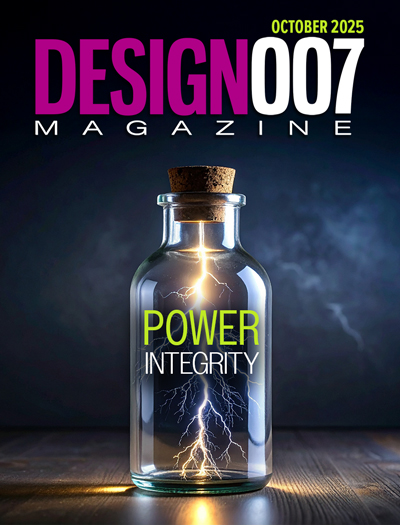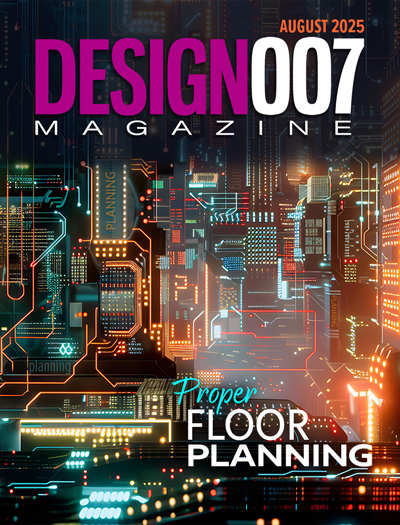-

- News
- Books
Featured Books
- design007 Magazine
Latest Issues
Current Issue
Power Integrity
Current power demands are increasing, especially with AI, 5G, and EV chips. This month, our experts share “watt’s up” with power integrity, from planning and layout through measurement and manufacturing.

Signal Integrity
If you don’t have signal integrity problems now, you will eventually. This month, our expert contributors share a variety of SI techniques that can help designers avoid ground bounce, crosstalk, parasitic issues, and much more.

Proper Floor Planning
Floor planning decisions can make or break performance, manufacturability, and timelines. This month’s contributors weigh in with their best practices for proper floor planning and specific strategies to get it right.
- Articles
- Columns
- Links
- Media kit
||| MENU - design007 Magazine
Estimated reading time: 1 minute
Beyond Design: The Key to Product Reliability
With today’s rapid product development cycles and time-to-market pressures, PCB designers are pushed to their limit. This situation leaves many developers with the question of how to ensure that their high-speed digital design performs to expectations, is stable given all possible diverse environments, and is reliable over the products projected life cycle. As developers avoid the expense and delays of re-engineering the product, they look to employ design integrity methodologies during the design phase.
For a sufficiently large number of electronics products, failures are distributed in time as shown in Figure 1. This curve is called “the bathtub curve” and displays the typical reliability of diverse products regardless of their functionality. One would expect a product to fail after some years of service but preferably long after the product becomes obsolete. Premature failures are of particular concern and are typically the result of poor design practice or substandard manufacture. This column will focus on the design aspects.
The cost of development is dramatically reduced if the simulation is employed early in the design cycle. If changes are made late in the design process, then it takes more time, people, materials, and money to complete the project. The advantage of simulation is that it identifies issues early in the design process and rectifies them before they become a major problem.
Design changes that occur:
- In the conceptual stage cost nothing
- During the design stage requires just a little extra time
- During the test stage means that you have to regress one stage
- During production—or worse yet, in the field—can cost millions to fix and possibly damage the company’s reputation
Having the project completed on time and within budget means that costs are cut by reducing the design cycle and generating higher profits due to shorter time-to-market and an extended product life cycle.
To read this entire column, which appeared in the June 2019 issue of Design007 Magazine, click here.
More Columns from Beyond Design
Beyond Design: The Fundamental Structure of Spectral IntegrityBeyond Design: Slaying Signal Integrity Villains
Beyond Design: Effective Floor Planning Strategies
Beyond Design: Refining Design Constraints
Beyond Design: The Metamorphosis of the PCB Router
Beyond Design: Radiation and Interference Coupling
Beyond Design: Key SI Considerations for High-speed PCB Design
Beyond Design: Electro-optical Circuit Boards


